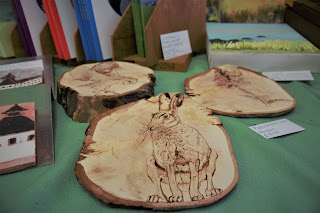If you are in need for a plan for the day, pop along to the Islay Natural History Trust for a good look around our detailed displays on Islay's natural environment, and even gain some inspiration for your daily adventures around the island. We are open from 10:00 am to 16:00 pm from Monday to Friday and tickets allow valid free entry for a whole week!.
We have an array of locally collected wildlife skulls, skeletons, shells, geology and more, all kindly donated to the trust. There is something for everyone!
Up to date wildlife sightings are also available within the centre, and our staff are more than happy to answer any queries or questions that you may have. Get a hands on experience in the centre, not only with our variety of natural objects, but with our marine touch tanks, where we hold fresh water species such as sea anemones, star fish and our newest member...the Spider crab!
We also have a variety of activities for all age groups to take part in whilst having a wander round the exhibits. Our extensive library collections are also accessible throughout opening hours and a great place to go for reference when undecided about a tricky species!
Feel free to have a look round the shop on your way out, which caters for all ages. We stock all things nature including wildlife packs for our beginner wildlife enthusiasts and a variety of Field Studies Council identification guides. We are currently stocking a select supply of unique craft, jewellery, art and photography pieces from our local artists, so come along and have a look and see if anything takes your fancy!































